10 ways to design a home office into your living room (and still switch off at the end of the day)
Business meets pleasure in these expert-approved living room home office ideas
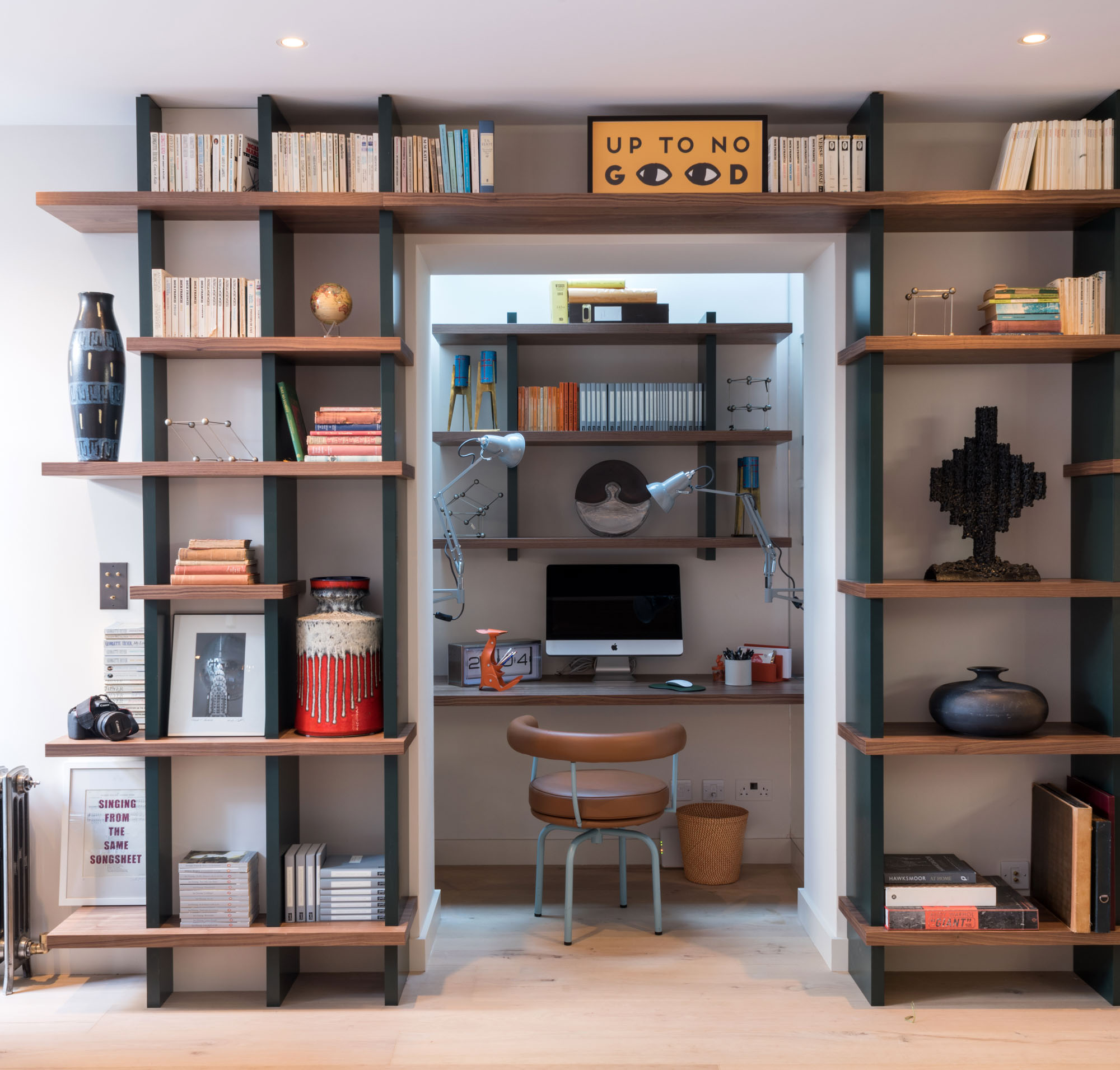
Living room home office ideas need not feel cramped or chaotic. If given some thought, these two very different spaces can work together in unison, meaning your living room can still feel restful and relaxing as well as being a functional space during the 9-5.
‘Now, more than ever, people are working remotely, and having a home office in your living room has become common,’ explains interior designer Megan Molten. But instead of having to carve out extra space for your WFH set-up, what's the solution?
'It is important for you to take time organizing and incorporating pieces that complement your living space, while keeping your desk clutter-free,' Megan says. 'Bringing in consoles and storage baskets are perfect for extra space to put things! A small home office in a living room should be an extension of your design aesthetic; it doesn't have to be an eyesore.’
To help you create a designated area for your living room home office, we spoke to interior designers to find out their top tips. Here's what they had to say...
10 of the best living room home office ideas to make this space dual purpose
1. Keep your space organized

If you're wondering how to work from home effectively, Charleston-based interior designer Megan Molten recommends having a designated place for everything.
‘Organization is all about creating functional zones that maximize space and blend seamlessly with the style of the home,' Megan says. 'Keep your desk accessories to a minimum to avoid it looking cluttered. I would recommend a frame and candle placed on a smaller round tray. Try to select finishes and accessories that complement the living space.'
Megan also suggests maximizing your drawer and cabinet space and while doing so, be sure to keep elements of style that reflect the design of your home. She says, 'Incorporating linen boxes, woven baskets and consoles all provide extra storage while blending into the space. Again, keeping your desk clutter-free is important too!’
The Livingetc newsletters are your inside source for what’s shaping interiors now - and what’s next. Discover trend forecasts, smart style ideas, and curated shopping inspiration that brings design to life. Subscribe today and stay ahead of the curve.
2. Make your desk a hidden gem
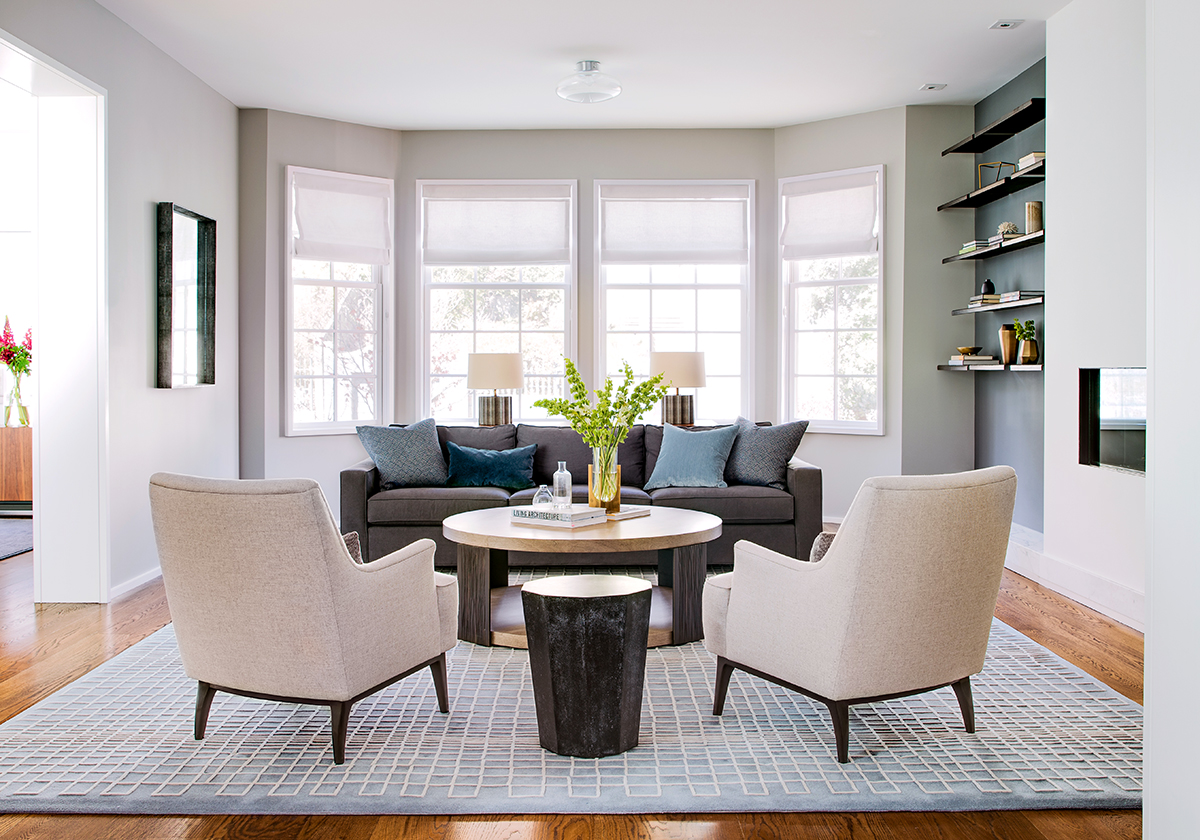
At first glance, you’d never know this living room had a dedicated home office in it, would you?
However, this clever design by Jennifer Jones of Niche Interiors includes a console desk behind the sofa with ottomans tucked underneath. According to Jones, this is one of two design approaches her team use for incorporating a workspace into a living room.
‘The first idea is to provide a console table behind the sofa that can also serve as a desk,’ Jones says. ‘Often, we will tuck ottomans underneath which can be pulled out for short stints on the laptop. For a more serious and permanent work set-up, it’s best to separate the space into various zones, with a larger desk on one side of the room, preferably near the window.'
However, when it comes to designing a space that needs to work for multiple uses, Jones highlights that it's always best to consider how a piece of furniture will look from various angles. 'Especially if it will be floating in a room,' she says.
3. Plenty of storage is key

In any living room home office, it's crucial that your working-from-home setup doesn’t encroach on your lounging space. After all, come 5pm you don't want to still be thinking about work.
‘This means being able to stash your laptop and work phone out of sight at the end of the working day,’ Irene Gunter of Gunter & Co Interiors explains. ‘If they are out of sight, hopefully, they are out of mind.'
'We work with some incredibly skilled carpenters who create storage ideas that are super practical but also a thing of beauty, personalized to your style and the way you organize your life,' she adds. 'Successful storage always comes down to plenty of forward planning. Think about how you use the space and what you want to hideaway or proudly put on display.’
Irene’s top tip? ‘Personally, I love creating docking drawers for each member of the family so that they can charge their laptop, iPad and phone overnight.’
4. Have a distinct divide

If your home office is part of an open plan space, try to create a distinct divide between your business and living area.
‘Having a distinct divide between the two will help you to compartmentalize in your mind too, Irene says. 'In our Chelsea townhouse, for example, we used Tom Faulkner’s fabulous Papillion screen to successfully separate the living area from the home office while retaining a sense of flow. Screens have the added benefit of being easy to move making it simple to switch up your layout when required.’
A folding screen or room divider has made a modest comeback in recent times –especially during the pandemic as people were forced to merge their at-home arrangement with their 9-5.
5. Have a focus on biophilic design
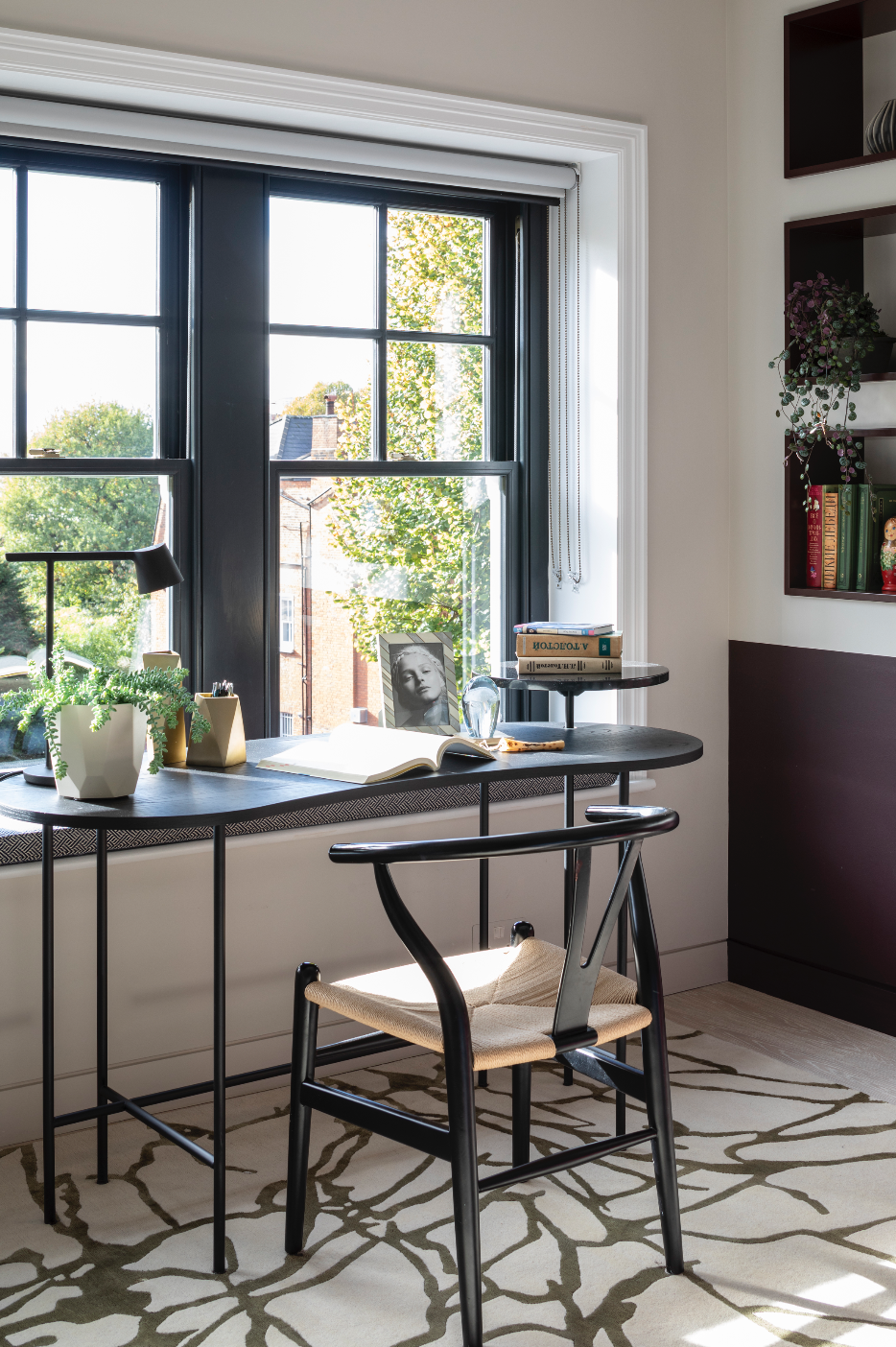
Biophilic design is a huge interior design trend. And we're all for it.
‘We all have an inherent need to connect with nature, which has a positive impact on our physical and mental well-being,' Irene explains. 'In recent years, this has led to a focus on biophilic design, which looks to bring elements of the natural world into the home.'
This can involve everything from building in views to the outside to including natural materials as finishing touches.
'One of the simplest ways to incorporate biophilic design into your home office is to make sure it benefits from an inspiring view – ideally with lots of greenery,' Irene tells us. 'If the layout of your home doesn’t allow for this, then the next best thing is to incorporate large house plants into your floorplan together with small potted indoor plants on desktops, windowsills, and shelving units. Other ways to bring a feeling of the natural world into your home office is to paint it in natural colors, source nature-inspired artworks, and think about how you can maximize natural light.’
6. Utilize nooks and alcoves

As you can see from this design, awkward spaces, boxy alcoves, or perfectly imperfect and unused corners provide the ideal space for a home office in your living room.
‘A nook or alcove is a good place for a home office as it is recessed from the main living room space,' Katie Glaister, the founder of K&H Design and the brains behind this project says. 'In our client’s basement living room we were pleased to identify space under the side alley to the garden, to create a home office.'
'The light shines in from above and the sides of the alcove are mirrored to extend the sense of space,' she adds. 'Design bespoke shelving to zone the home office and create more storage.’
7. Soundproof your space, if possible

Both offices and living spaces can be noisy places. Especially if you're working in a small living room while others are trying to relax in the living area. The key?
‘Make sure the home office is not positioned too near the TV or chill-out area, so the multipurpose room will work in unison,' Katie Glaister says.
'Introduce glass or crittall doors to soundproof and create more privacy for the home office whilst keeping it connected to the living room.’
8. Zone your spaces with color
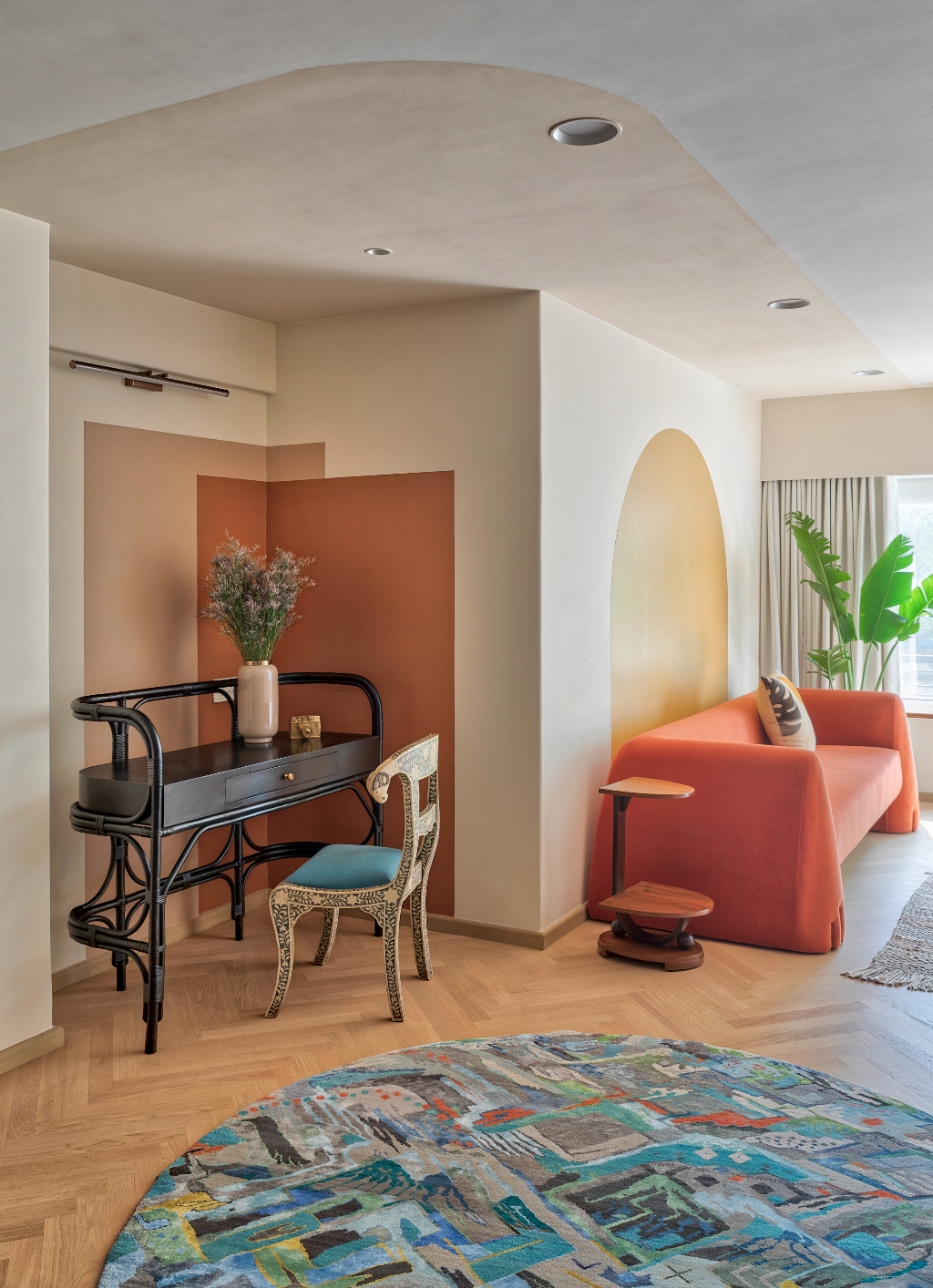
Fan of color? As we've seen with the top colorful living room ideas, injecting some bright and beautiful shades into your space can energize any room. And interior designer, Noorein Kapoor recommends introducing pops of color in your living room to help intentionally zone your work life and living area.
‘Working from home comes with inevitable distractions,' Noorein says. 'It’s a lot easier for your work to be impacted when Netflix and your kitchen are within a few feet. You can combat those attention-stealing details of your home by positioning your desk to face a wall or a window (not the TV) and by ensuring your space is organized.
'One can designate an empty corner as your new living room office,' Noorein suggests. 'To set up the best environment for a living room office, you’ll want to ensure that your shared spaces strike a balance of blending into one another while still retaining their separate functions.'
The solution?
'Carve out a spot in a living room for work by zoning the space with a panel of color – in this case, a desert color palette. Also, in this case, we had a natural niche in the living room which created a partition which helped us in zoning it separately.’
9. Have a clear pathway

Another way to really separate your living room from your home office? Having a clear pathway to your WFH space.
'Maintaining a clear path in the room is really important,' Arianna Castro, interior designer at Britto Charette says. 'Also, try to incorporate furniture that can blend with the existing furniture in your living room. And avoid having any obstructing furniture and keep it neat.'
10. Make use of multifunctional furniture
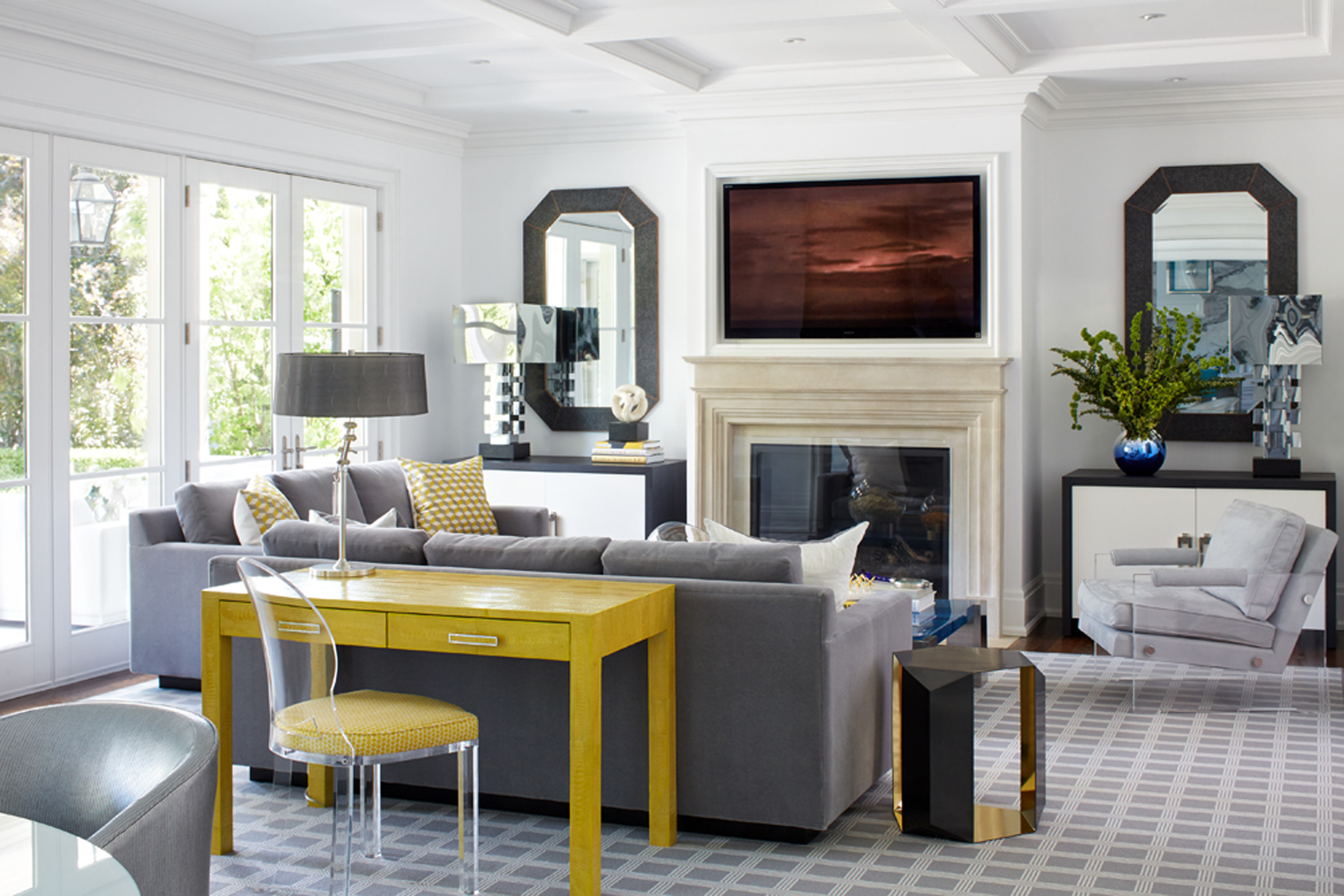
Multifunctional furniture has a place in any living room. Especially when you're trying to make this room a dual space.
So, be sure to look out for multifunctional pieces of furniture. Think: an ottoman that opens up to store all your paperwork away, a coffee table with drawers or a console table that can house your desk.
Sara Malek Barney of BANDD/DESIGN agrees. 'When incorporating a home office space into your living room, you want to consider using pieces that are multi-functional,' she says.
'If you have a console behind your sofa, pull up a chair, add a few accessories and you’re ready to tackle your inbox. You can also use a built-in or small niche to set up a workspace. Add in a comfortable chair and some organizational pieces to complete the look.'
'For this project, I took a different take on the sofa table and made one of our custom ah-ha ostrich yellow desks,' says interior designer Anne Hepfer. 'This is a unique way to have a workspace in your home if you don't have room for an at-home office. All you need is a lamp and a desk chair as console table decor, which makes styling simple and easy.'
But remember: 'Make sure you are sticking to the décor that matches your current design. You want to make sure everything works in harmony and stays organized and streamlined,' Barney adds.
Where should I position a home office in a living room?

Poor lighting can lead to fatigue, headaches and eye strain – especially if you are working on a computer for 8 hours. ‘Always consider natural light,' says Houston-based interior designer Marie Flanigan. 'An influx of natural light is great for keeping morale high, especially if you’re working alone from home.'
Your best bet would be to position your WFH space near a window, overhead lighting or by propping a lamp on your table. But don't forget the cardinal rule when it comes to turning your living room into a home office: pack all your work necessities away at the end of the day.
'It’s important to be able to turn off at the end of the day and make sure that you get to enjoy your living room to rest and relax,' Marie says. 'Further, if you have an open floor plan, the breakfast table is a great spot to spread out. Since one typically uses their breakfast area daily, it forces you to pick up and store your work items at the end of each day.’
Becks is a freelance lifestyle writer who works across a number of Future's titles. This includes Real Homes, Top Ten Reviews, Tom's Guide, TechRadar and more. She started her career in print journalism at a local newspaper more than 8 years ago and has since then worked across digital and social media for food, fashion and fitness titles, along with home interior magazines. Her own interior style? She's big on creating mindful spaces in every corner of her home. If it doesn't spark joy or happiness, it has no place here. When she’s not writing, she’s reading and when she’s not reading, she’s writing.